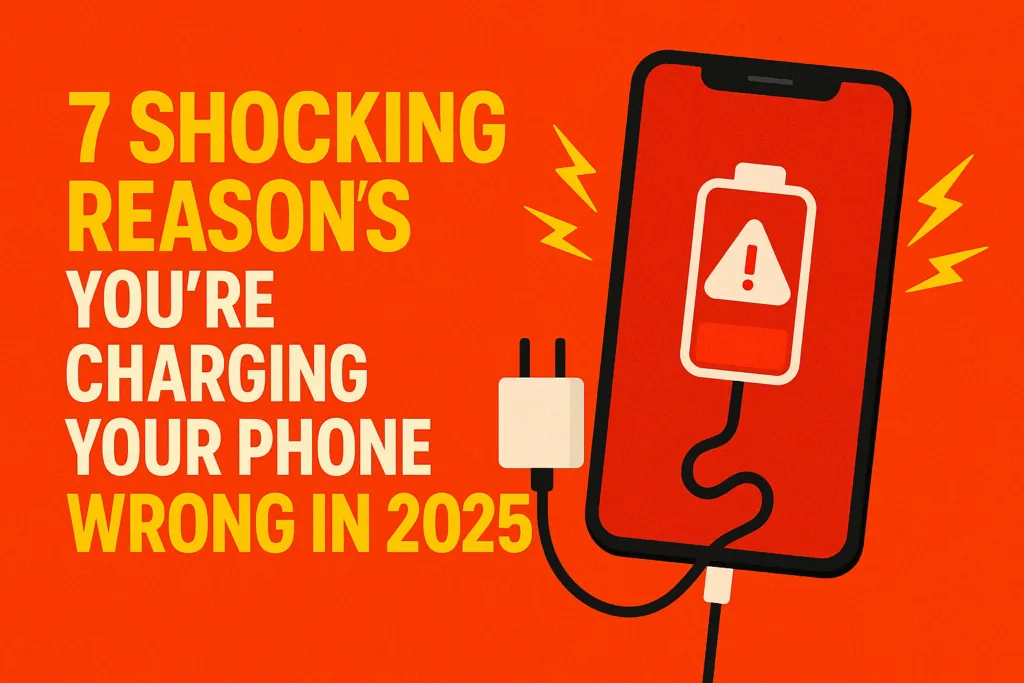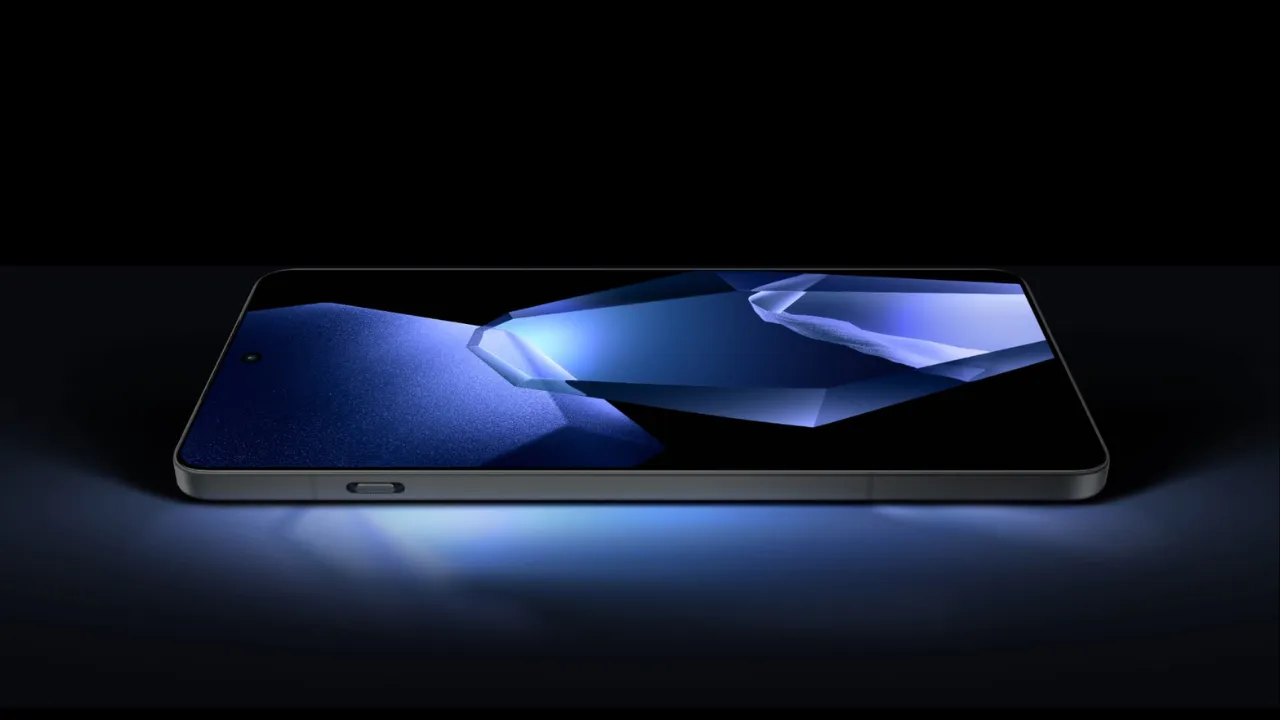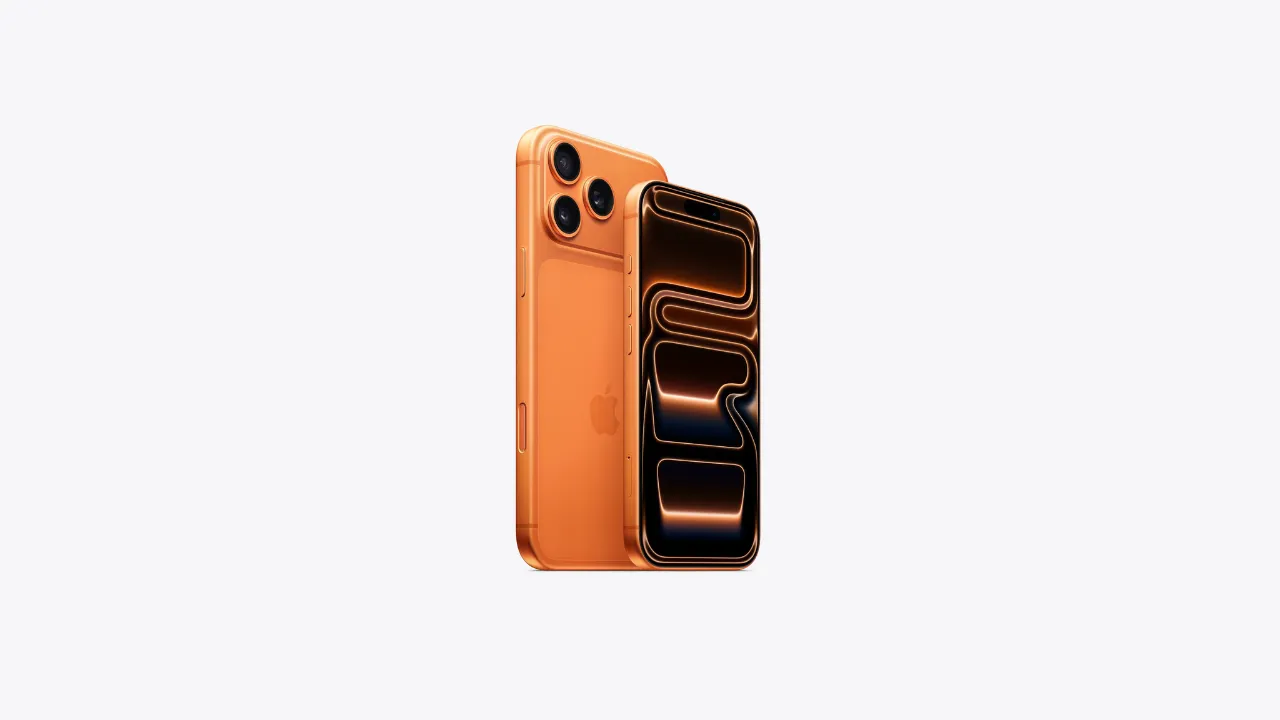Introduction: Why Phone Charging Habits Matter
In today’s digital world, smartphones have become our daily lifeline. Whether it’s staying connected, working remotely, or enjoying entertainment on the go, everything depends on your phone’s battery. But what if the way you’re charging your phone is silently killing its performance? Yes, charging your phone wrong is more common than you think—and it can drastically reduce your battery’s health over time.
Most people plug in their phone whenever it’s convenient without thinking about long-term effects. Charging overnight, using cheap third-party chargers, or constantly topping up the battery throughout the day may seem harmless, but these habits add up. Your phone’s battery has a limited number of charge cycles, and the wrong charging practices can accelerate their depletion.
Understanding proper charging techniques isn’t just about keeping your phone alive for the day; it’s about ensuring it performs well for years. Poor habits can lead to reduced battery backup, slower performance, and even overheating risks. With smartphones becoming more expensive, taking care of your battery is no longer optional—it’s essential.
This blog will break down the most common mistakes people make while charging their phones, explain how those mistakes affect long-term battery life, and offer practical tips to fix them. Whether you’re a casual user or a power user, knowing how to charge correctly can save you money, frustration, and future battery replacements.
If you’ve ever wondered why your battery drains faster than expected or why your phone heats up while charging, it might be because you’re charging your phone wrong. Let’s dive deeper into the myths, facts, and best practices that will help you get the most out of your smartphone battery.
Common Myths About Charging Your Phone
When it comes to smartphone charging, misinformation is everywhere. Many users unknowingly follow outdated advice or believe in common myths that can harm their device in the long run. If your phone’s battery isn’t lasting as long as it should, it might be because you’ve been charging your phone wrong based on these widespread misconceptions.
One of the most common myths is that you should always let your battery drop to zero before charging. Modern lithium-ion batteries don’t require full discharge to maintain health—in fact, frequent deep discharges can shorten battery life. Charging your phone when it reaches around 20% is actually healthier.
Another popular belief is that overnight charging damages the battery. While most smartphones today come with built-in protection to stop charging at 100%, keeping your phone plugged in all night can still expose it to excess heat, which affects battery health over time.
People also assume that using fast chargers all the time is safe. While fast charging is convenient, excessive heat generated during the process can be harmful if done frequently, especially on phones without advanced thermal management.
Some users think third-party or cheap chargers are harmless if they fit the port. In reality, poor-quality cables and adapters can deliver unstable power and increase the risk of damaging internal battery circuits.
Believing these myths leads to habits that result in charging your phone wrong. It’s important to separate facts from fiction and understand how modern batteries really work. Once you stop following these outdated tips and start using smarter practices, your phone’s performance and battery health can noticeably improve. Knowing the truth can help you avoid irreversible damage and extend your phone’s lifespan.
Charging Mistakes That Damage Battery Health
Most smartphone users unknowingly make daily mistakes that slowly damage their battery health. If your phone doesn’t last as long as it used to or heats up while charging, chances are you’re charging your phone wrong. These habits may seem small but have a big impact on your phone’s long-term performance.
One major mistake is frequently letting your battery drop below 10% before charging. Modern lithium-ion batteries work best when kept between 20% to 80%. Deep discharges and full charges stress the battery and reduce its lifespan over time.
Another harmful habit is keeping your phone plugged in after it hits 100%. While phones stop charging once full, staying connected to the charger generates heat, which is one of the biggest enemies of battery health. Constant exposure to heat slowly degrades battery performance.
Using your phone while it’s charging is another common issue. This generates more heat and puts extra load on both the processor and the battery. It not only slows down charging but also contributes to faster battery wear.
Fast charging is useful, but using it all the time can be risky, especially on phones without advanced cooling systems. The higher voltage and rapid power delivery can cause overheating, especially in budget or mid-range phones.
Lastly, using poor-quality or non-certified charging cables can lead to unstable power flow. This inconsistency harms the battery cells and can even lead to charging port damage.
These simple but damaging habits often go unnoticed. But by recognizing and correcting them, you can avoid charging your phone wrong and significantly extend your battery’s life. Smarter charging not only keeps your phone healthy but also saves you from battery replacements and unexpected shutdowns in the future.
Fast Charging vs Regular Charging: Pros and Cons
With smartphones becoming more powerful, fast charging has become a popular feature that promises convenience. But is it always the better choice? If you don’t understand when and how to use it, you might be charging your phone wrong without even realizing it. Let’s explore the pros and cons of fast charging compared to regular charging, so you can make the right decision for your device’s battery health.
Fast charging offers a clear advantage when you’re short on time. It can charge your phone up to 50–70% in under 30 minutes depending on the charger and phone model. This is especially useful for people with busy schedules or those who need a quick top-up before heading out. However, the speed comes at a cost. Fast charging generates more heat, which is a major factor in battery degradation. Over time, consistent exposure to high temperatures can shorten the overall lifespan of your battery.
Regular charging, on the other hand, is slower but gentler. It generates less heat and keeps the battery under less stress. If you’re charging overnight or while at home, using a standard charger is often better for long-term battery health. It may take more time, but it helps maintain the battery’s original capacity over months and years.
The key is balance. Using fast charging occasionally is fine, especially when you’re in a hurry. But making it your default method every time may mean you’re charging your phone wrong. For everyday use, regular charging is a smarter and safer choice. Understanding the trade-offs between speed and battery health will help you charge more efficiently and protect your phone’s battery in the long run.
Should You Charge Overnight? The Truth
One of the most debated questions among smartphone users is whether charging overnight is safe or harmful. While it’s convenient to plug in your phone before bed and wake up to a full battery, this habit might be doing more harm than good. If you’re regularly charging your phone overnight without understanding the risks, chances are you’re charging your phone wrong.
Modern smartphones do have built-in systems to stop charging once the battery hits 100%. But that doesn’t mean the phone stops drawing power completely. What actually happens is a small trickle charge continues to maintain that 100% level throughout the night. This repeated topping-up process generates heat, which gradually impacts battery health.
Heat is the silent enemy of lithium-ion batteries. Leaving your phone plugged in under a pillow or on a warm surface can trap heat and accelerate battery wear. Over months of daily overnight charging, this can reduce your battery’s capacity and overall lifespan, even if the damage isn’t immediately visible.
Another issue is full charging. Keeping your phone at 100% for long durations puts more stress on the battery compared to maintaining it between 20% and 80%, which is considered the optimal range for battery health. So, plugging in overnight often means the battery stays at full charge for several hours unnecessarily.
If you must charge your phone while sleeping, consider using a smart plug with a timer or enable battery protection features available in many modern devices. These tools help pause charging or slow it down overnight.
In short, while overnight charging isn’t dangerous, it’s not ideal for battery longevity either. Knowing the truth helps you avoid charging your phone wrong and keeps your device running efficiently for years to come.
Ideal Battery Percentage for Charging
Knowing when to plug in your phone is just as important as how you charge it. Most people don’t think twice about charging habits—they just charge when convenient. But if you’re not paying attention to battery levels, you might be charging your phone wrong and unknowingly reducing its battery lifespan.
The ideal battery percentage range for charging is between 20% and 80%. Lithium-ion batteries, which power most smartphones today, perform best when they operate within this range. Letting your battery drain completely to 0% or consistently charging to 100% puts more stress on the battery cells and leads to faster degradation over time.
Many users believe it’s best to fully charge to 100% and only recharge when the battery is critically low. While this made sense in the days of older battery technologies, it doesn’t apply to modern smartphones. Deep discharging and full charging both increase wear on the battery.
Topping up the battery when it hits around 20–30% and unplugging it before it crosses 85–90% is a smart habit. It reduces heat buildup and keeps the battery cycles healthier. Some smartphones now come with built-in “battery protection” or “optimized charging” modes, which slow down or limit charging past a certain point to help maintain battery health.
If you constantly charge your phone when it’s already above 90% or let it fall below 10% regularly, you’re likely charging your phone wrong. These small habits make a big difference over time.
For long-term performance and better battery life, start focusing on maintaining a healthy charging range. It’s a simple change, but it goes a long way in keeping your phone’s battery strong and reliable. According to experts, keeping your phone battery between 20% and 80% helps maintain long-term health. How to prolong lithium-ion battery life offers deeper insights into this charging method.
Using the Right Charger and Cable Matters
One of the most overlooked aspects of phone charging is the quality of the charger and cable you use. Many users assume that any cable that fits the port will do the job. But using the wrong or low-quality accessories is one of the biggest reasons you might be charging your phone wrong without realizing it.
Every smartphone is designed to handle a specific voltage and current. Using an incompatible charger—even if it seems to work—can result in slow charging, overheating, or even long-term damage to your battery. Cheap third-party chargers often lack the safety features needed to regulate power flow properly. They may overcharge the device, deliver unstable voltage, or fail to shut off when necessary, all of which put stress on your battery and internal components.
Cables also play a huge role. Low-quality or damaged cables may not deliver consistent power and can interrupt the charging process. Over time, this leads to battery instability and reduced performance. Frayed or bent cables can also become fire hazards or damage your charging port.
It’s always best to use the original charger and cable that came with your device, or certified replacements from trusted brands. Look for cables that are USB-IF certified or marked with fast-charging support if your phone allows it. If you’re using fast chargers, make sure both the charger and cable are rated for the same standard to avoid overheating or hardware issues.
Using the wrong accessories may not show immediate problems, but over time they reduce battery health and can even shorten your phone’s lifespan. So if you’ve been ignoring this part of your charging routine, it’s another sign you’re charging your phone wrong. Making a small investment in quality accessories ensures safer, faster, and healthier charging every time.
How Heat Affects Battery Life
Heat is one of the biggest enemies of your smartphone’s battery, yet it’s often ignored during daily use. Many users unknowingly expose their devices to high temperatures while charging, thinking it’s normal. But if you’re not managing heat properly, you’re likely charging your phone wrong and silently damaging the battery over time.
Lithium-ion batteries, which power most smartphones, are sensitive to temperature. When the phone gets too hot—whether during fast charging, heavy gaming while plugged in, or simply charging under a pillow—it speeds up chemical reactions inside the battery. This causes the battery to degrade faster, reducing its ability to hold a charge in the long run.
Charging generates some heat naturally, but poor habits can make it worse. For example, using your phone while it’s charging increases processor activity, which adds to the heat. Similarly, leaving your phone plugged in after reaching 100%, especially overnight, keeps the battery at a high charge level, which combined with heat, can stress it even more.
External factors also matter. Charging your phone in a hot car, in direct sunlight, or under blankets traps heat around the device. Even a quality battery can’t handle prolonged exposure to high temperatures without losing its efficiency.
To protect battery health, always charge your phone in a cool, well-ventilated area. Remove thick cases while charging if your phone tends to heat up. Avoid charging during intense usage like gaming or video editing, and try not to leave your phone charging unattended for long periods.
If your phone frequently feels hot during or after charging, it’s a strong sign you’re charging your phone wrong. Managing heat properly is one of the simplest yet most effective ways to extend battery life and ensure your phone stays reliable for years.
Tips to Maximize Your Phone’s Battery Lifespan
Every smartphone user wants a battery that lasts longer and performs reliably for years. Yet, many people develop habits that do just the opposite—without even realizing it. If you’re serious about preserving your battery health, you need to avoid charging your phone wrong and start following simple, smart charging practices.
First, maintain your battery between 20% and 80% instead of letting it drain to zero or charge fully all the time. Lithium-ion batteries work best in this mid-range and degrade more slowly when kept in this zone. Avoid deep discharges and continuous 100% charges whenever possible.
Second, avoid overnight charging unless your phone has built-in battery protection features. If you must charge while sleeping, use a smart plug with a timer or enable features like “Optimized Charging” to reduce long-term damage.
Always use original or certified chargers and cables. Cheap accessories may save you money upfront, but they often deliver unstable power and generate unnecessary heat, both of which harm the battery over time. Consistency and safety in power delivery play a huge role in battery health.
Also, keep an eye on heat. Charging in a hot environment or using your phone heavily while it’s plugged in increases internal temperature, which accelerates battery wear. Always charge in a cool, open space, and avoid using thick cases that trap heat during charging.
Enable battery-saving modes when needed and keep background apps in check to reduce unnecessary drain. Regularly update your software as manufacturers often include optimizations that improve battery performance.
By following these small yet powerful habits, you can extend your phone’s battery life significantly. Remember, charging your phone wrong is easy—but so is charging it right once you know the science behind it. Start making these changes today for long-term performance and peace of mind.
Final Thoughts: Charge Smart, Not Just Fast
In the race for speed and convenience, we often overlook the long-term effects of our daily habits—charging being one of them. While fast charging can be a lifesaver during busy days, relying on speed alone without understanding proper practices can lead to slow battery degradation. If you’ve been prioritizing quick top-ups without care, chances are you’ve been charging your phone wrong all along.
Your phone’s battery isn’t just a power source—it’s the heart of your device’s performance. Once it starts to weaken, everything from screen-on time to app responsiveness takes a hit. That’s why smart charging is about balance. Use fast charging when necessary, but default to regular, safer methods when time allows. Avoid extreme battery levels, unplug once charged, manage heat, and always choose the right accessories.
Charging smart means being mindful of how, when, and where you plug in your phone. Small changes like not charging overnight, keeping the battery between 20% and 80%, and avoiding cheap cables may not feel important today—but they pay off in the long run with a more reliable and longer-lasting device.
Ultimately, it’s not about avoiding charging altogether—it’s about doing it right. Your smartphone is a major investment, and taking better care of its battery ensures you get the best performance out of it for years. Don’t wait until your battery starts acting up. Start making better choices now, because charging your phone wrong is one mistake that’s easy to fix—and even easier to avoid.
Also Read: Install Linux on Windows 2025 – Powerful Guide
FAQs – Phone Charging Do’s and Don’ts
Q1. Is it bad to leave my phone charging overnight?
Leaving your phone plugged in overnight occasionally isn’t harmful thanks to built-in protection, but doing it regularly exposes the battery to prolonged high charge levels and heat. Over time, this can reduce battery health. For better longevity, unplug once it hits around 80–90%.
Q2. Should I always let my battery drop to 0% before charging?
No. That’s an outdated myth. Modern lithium-ion batteries perform best when kept between 20% and 80%. Frequent deep discharges reduce battery lifespan. So if you’ve been doing this, you’re charging your phone wrong.
Q3. Does fast charging damage my battery?
Fast charging generates more heat, which can wear out the battery faster if overused. It’s safe for occasional use, but regular fast charging may shorten battery life, especially if your phone doesn’t manage heat well.
Q4. Can I use my phone while it’s charging?
Technically yes, but it’s not ideal. Using your phone during charging causes more heat buildup and slows down the charging process. It’s best to let it charge undisturbed when possible.
Q5. Are all chargers and cables the same?
Not at all. Cheap or unverified chargers may deliver inconsistent power and lack safety features. Always use original or certified accessories to avoid damaging the battery or internal components.
Q6. What’s the best way to extend battery life?
Avoid charging to 100% or dropping below 10%, keep your phone cool while charging, and don’t use fast charging all the time. These habits help you avoid charging your phone wrong and improve long-term battery health.
Q7. Does closing background apps save battery while charging?
Yes, fewer background processes reduce heat and power usage, allowing smoother and safer charging.
By following these practical do’s and don’ts, you can take better care of your phone and its battery for the long haul.













